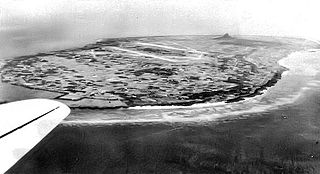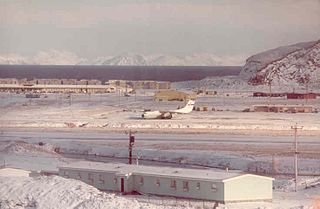
The 301st Fighter Wing is an Air Reserve Component (ARC) of the United States Air Force. It is assigned to the Tenth Air Force, Air Force Reserve Command, stationed at Carswell Field, Naval Air Station Joint Reserve Base Fort Worth, Texas. If mobilized, the Wing is gained by the Air Combat Command.

The 318th Fighter Group was a World War II United States Army Air Forces combat organization. It served primarily in the Pacific Ocean theater of World War II.

The 68th Fighter Squadron was one of the longest-serving fighter squadrons in U.S. Air Force history, remaining active almost continually for 60 years. Known as the "Lightning Lancers", on the morning of 27 June 1950 pilots of the 68th Fighter-All Weather Squadron flying the North American F-82 Twin Mustang made history by achieving the first aerial kill of the Korean War.

The 100th Fighter Squadron is a unit of the Alabama Air National Guard 187th Fighter Wing located at Dannelly Field, Alabama. The 100th is equipped with the General Dynamics F-16C+ Fighting Falcon.

The 6th Weapons Squadron is an active United States Air Force unit. It is assigned to the USAF Weapons School, based at Nellis Air Force Base, Nevada. It was previously assigned to the Seventh Air Force, being inactivated at Yokota Airfield, Japan on 20 February 1947.

The 39th Flying Training Squadron is part of the 340th Flying Training Group and is the reserve associate to the 12th Flying Training Wing based at Randolph Air Force Base, Texas.

During World War II, the United States Army Air Forces established a series of airfields in Australia for the collective defense of the country, as well as for conducting offensive operations against the Imperial Japanese Army and Navy. From these airports and airfields in Australia, the Fifth Air Force was able to regroup, re-equip and begin offensive operations against the Empire of Japan after the disasters in the Philippines and Dutch East Indies during 1942.

The 433rd Weapons Squadron is a United States Air Force unit, assigned to the USAF Weapons School at Nellis AFB, Nevada.
Sansapor Airfield is a former World War II airfield located in the village of Werur, in Tambrauw Regency, Southwest Papua, Indonesia. The airfield was abandoned after the war and was almost totally returned to its natural state. Since 2014 the field is being rebuild to airport status.
Owi Airfield is a former World War II airfield located on Owi Island in the Schouten Islands, Indonesia.

East Field is a former World War II airfield on Saipan in the Mariana Islands, part of Naval Advance Base Saipan.

Ie Shima Auxiliary Airfield is a training facility, managed by the United States Marine Corps and a former World War II airfield complex on Ie Shima, an island located off the northwest coast of Okinawa Island in the East China Sea. The airfield as such was inactivated after 1946 but part of the former airfield is still used as a training facility for parachute drops and vertical take off and landing aircraft such as the F-35. The facility is referenced as FAC6005 by Okinawa Prefecture.

The 73d Bombardment Squadron is an inactive United States Air Force unit. It was last assigned to the 4241st Strategic Wing, based at Seymour Johnson Air Force Base, North Carolina. It was inactivated on 15 April 1963.

Dalhart Army Air Base is a former World War II military airfield complex near the city of Dalhart, Texas. It operated three training sites for the United States Army Air Forces from 1943 until 1945.
Amchitka Air Force Base is an abandoned Air Force Base located on Amchitka, in the Rat Islands group of the Aleutian Islands in southwest Alaska.

Dudhkundi Airfield is an abandoned airfield in India, located 12 miles (19.2 km) SE of Jhargram, in the Jhargram district in the Indian state of West Bengal.

The 53rd Weapons Evaluation Group is a United States Air Force unit that reports to the 53rd Wing. It is stationed at Tyndall Air Force Base, Florida. The unit is part of Air Combat Command.
Alexai Point Army Airfield is an abandoned World War II airfield with two runways laid across Alexai Point on Attu Island, Alaska. The remains of the Seabee built airbase are located about 4 miles east of the closed Casco Cove Coast Guard Station, directly across Massacre Bay.

The 123d Fighter Squadron is a unit of the Oregon Air National Guard 142d Fighter Wing located at Portland Air National Guard Base, Oregon. The 123d is equipped with the McDonnell Douglas F-15C Eagle.

Naval Air Facility Adak, was a United States Navy airport located west of Adak, on Adak Island in the U.S. state of Alaska. After its closure in 1997, it was reopened as Adak Airport. The facility was designated a National Historic Landmark for its role in World War II, although most of its elements from that period have been demolished or lie in ruins.


















